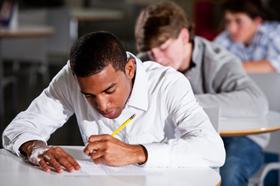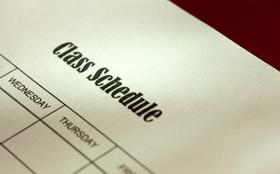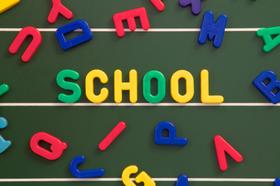Top Rankings
New York City Geographic District # 1 School District ranks among the top 20% of public school district in New York for:
Category
Attribute
Diversity
Most diverse schools (Top 1%)
Community Size
Largest student body (number of students) (Top 1%)
For the 2025 school year, there are 16 public preschools serving 4,963 students in New York City Geographic District # 1 School District. This district's average pre testing ranking is 6/10, which is in the top 50% of public pre schools in New York.
Public Preschools in New York City Geographic District # 1 School District have an average math proficiency score of 38% (versus the New York public pre school average of 38%), and reading proficiency score of 43% (versus the 41% statewide average).
Minority enrollment is 87% of the student body (majority Hispanic), which is more than the New York public preschool average of 62% (majority Hispanic).
Overview
This School District
This State (NY)
# Schools
27 Schools
1,575 Schools
# Students
9,990 Students
680,405 Students
# Teachers
874 Teachers
57,270 Teachers
Student : Teacher Ratio
11:1
11:1
Student By Grade
District Rank
New York City Geographic District # 1 School District, which is ranked #289 of all 1,015 school districts in New York (based off of combined math and reading proficiency testing data) for the 2022-2023 school year.
The school district's graduation rate of 47% has decreased from 61% over five school years.
Overall District Rank
#293 out of 1020 school districts
(Top 30%)
(Top 30%)
Math Test Scores (% Proficient)
(22-23)56%
52%
Reading/Language Arts Test Scores (% Proficient)
56%
49%
Science Test Scores (% Proficient)
81%
78%
Graduation Rate
(22-23)47%
87%
Students by Ethnicity:
Diversity Score
0.72
0.73
% American Indian
1%
1%
% Asian
18%
11%
% Hispanic
45%
31%
% Black
14%
16%
% White
17%
38%
% Hawaiian
n/a
n/a
% Two or more races
5%
3%
All Ethnic Groups
Best New York City Geographic District # 1 School District Public Preschools (2025)
School
(Math and Reading Proficiency)
(Math and Reading Proficiency)
Location
Grades
Students
Rank: #11.
P.s. 184 Shuang Wen
(Math: 75% | Reading: 75%)
Rank:
Rank:
9/
Top 20%10
327 Cherry St-2nd Fl
New York, NY 10002
(212) 602-9700
New York, NY 10002
(212) 602-9700
Grades: PK-8
| 734 students
Rank: #22.
P.s. 110 Florence Nightingale
(Math: 55-59% | Reading: 55-59%)
Rank:
Rank:
7/
Top 50%10
285 Delancey St
New York, NY 10002
(212) 674-2690
New York, NY 10002
(212) 674-2690
Grades: PK-5
| 264 students
Rank: #33.
Ps 19 Asher Levy
(Math: 50-59% | Reading: 55-59%)
Rank:
Rank:
7/
Top 50%10
185 1st Ave
New York, NY 10003
(212) 533-5340
New York, NY 10003
(212) 533-5340
Grades: PK-5
| 176 students
Rank: #44.
East Village Community School
(Math: 50-54% | Reading: 50-54%)
Rank:
Rank:
7/
Top 50%10
185 1st Ave
New York, NY 10003
(212) 533-5340
New York, NY 10003
(212) 533-5340
Grades: PK-5
| 473 students
Rank: #55.
Neighborhood School
(Math: ≥50% | Reading: ≥50%)
Rank:
Rank:
6/
Top 50%10
121 E 3rd St
New York, NY 10009
(212) 387-0195
New York, NY 10009
(212) 387-0195
Grades: PK-5
| 224 students
Rank: #66.
Children's Workshop School
(Math: 40-44% | Reading: 45-49%)
Rank:
Rank:
5/
Bottom 50%10
610 E 12th St
New York, NY 10009
(212) 614-9531
New York, NY 10009
(212) 614-9531
Grades: PK-5
| 319 students
Rank: #77.
P.s. 15 Roberto Clemente
(Math: 25-29% | Reading: 30-34%)
Rank:
Rank:
3/
Bottom 50%10
333 E 4th St
New York, NY 10009
(212) 228-8730
New York, NY 10009
(212) 228-8730
Grades: PK-5
| 190 students
Rank: #88.
Star Academy Ps 63
(Math: 20-29% | Reading: 30-39%)
Rank:
Rank:
3/
Bottom 50%10
121 E 3rd St
New York, NY 10009
(212) 674-3180
New York, NY 10009
(212) 674-3180
Grades: PK-5
| 207 students
Rank: #99.
P.s. 20 Anna Silver
(Math: 30-34% | Reading: 20-24%)
Rank:
Rank:
2/
Bottom 50%10
166 Essex St
New York, NY 10002
(212) 254-9577
New York, NY 10002
(212) 254-9577
Grades: PK-5
| 379 students
Rank: #1010.
P.s. 140 Nathan Straus
(Math: 10-14% | Reading: 35-39%)
Rank:
Rank:
2/
Bottom 50%10
123 Ridge St
New York, NY 10002
(212) 677-4680
New York, NY 10002
(212) 677-4680
Grades: PK-8
| 368 students
Rank: #1111.
Earth School
(Math: ≤20% | Reading: 21-39%)
Rank:
Rank:
2/
Bottom 50%10
600 E 6th St
New York, NY 10009
(212) 477-1735
New York, NY 10009
(212) 477-1735
Grades: PK-5
| 194 students
Rank: #1212.
P.s. 142 Amalia Castro
(Math: 20-29% | Reading: 20-29%)
Rank:
Rank:
2/
Bottom 50%10
100 Attorney St
New York, NY 10002
(212) 598-3800
New York, NY 10002
(212) 598-3800
Grades: PK-5
| 373 students
Rank: #1313.
P.s. 188 Island School
(Math: 20% | Reading: 24%)
Rank:
Rank:
2/
Bottom 50%10
442 E Houston St
New York, NY 10002
(212) 677-5710
New York, NY 10002
(212) 677-5710
Grades: PK-8
| 456 students
Rank: #1414.
P.s. 64 Robert Simon
(Math: 15-19% | Reading: 20-24%)
Rank:
Rank:
1/
Bottom 50%10
600 E 6th St
New York, NY 10009
(212) 673-6510
New York, NY 10009
(212) 673-6510
Grades: PK-5
| 188 students
Rank: #1515.
P.s. 134 Henrietta Szold
(Math: 10-14% | Reading: 20-24%)
Rank:
Rank:
1/
Bottom 50%10
293 E Broadway
New York, NY 10002
(212) 673-4470
New York, NY 10002
(212) 673-4470
Grades: PK-5
| 201 students
Rank: #1616.
P.s. 34 Franklin D Roosevelt
(Math: ≤5% | Reading: 20-24%)
Rank:
Rank:
1/
Bottom 50%10
730 E 12th St
New York, NY 10009
(212) 228-4433
New York, NY 10009
(212) 228-4433
Grades: PK-8
| 217 students
Recent Articles

The Link Between Education and Incarceration: The NAACP Report
Education and the rate of incarceration have been linked in a recent NAACP report. Learn about the report and the troubling findings.

The Debate Over Mandatory AP Exams: Balancing Academic Rigor and Student Well-being
Some public schools are forcing students in AP courses to take the AP exam. Here's a look at both sides of the debate and the potential benefits in store for both students and high schools.

The 15 Biggest Failures of the American Public Education System
The world is in a constant state of change and those who fail to adjust fall behind. Unfortunately, the American public education system has not kept up with the times and is currently facing a number of serious problems. Keep reading to learn about the biggest failures affecting the modern U.S. public education system as well as some of the trends that could spark change.





